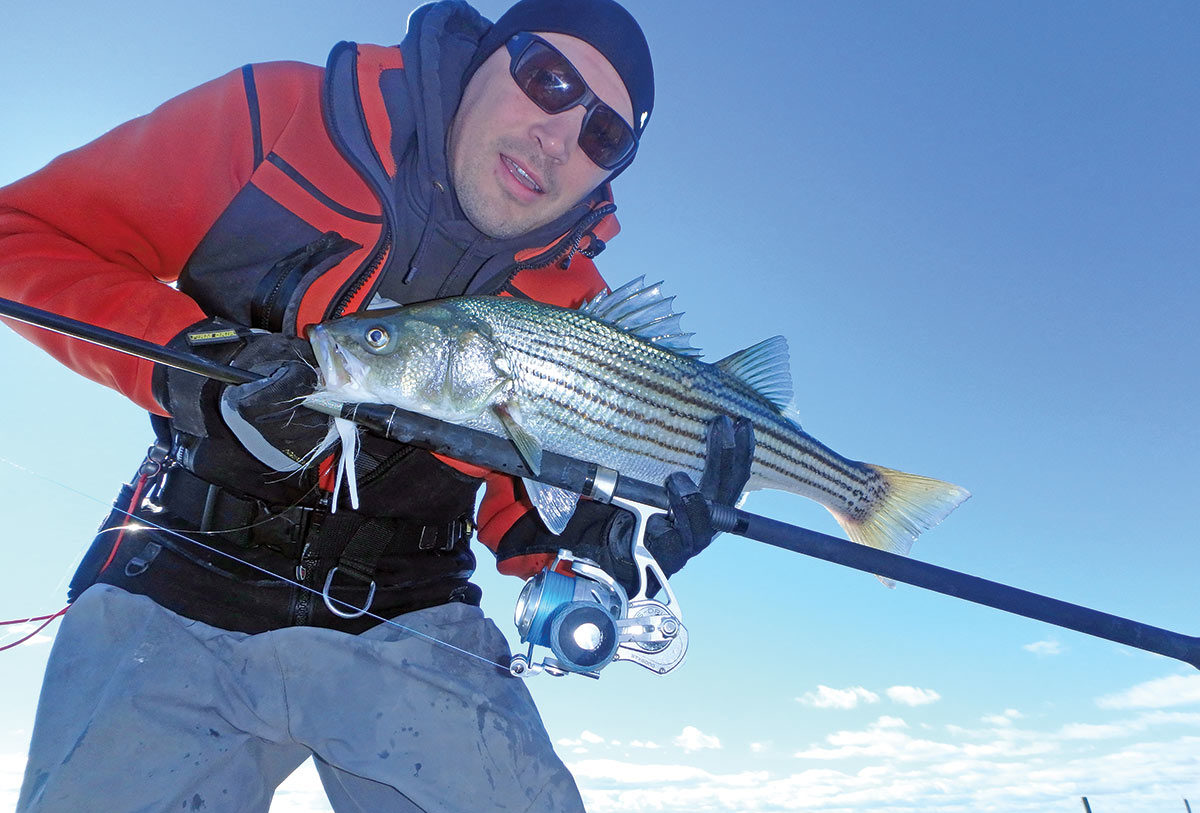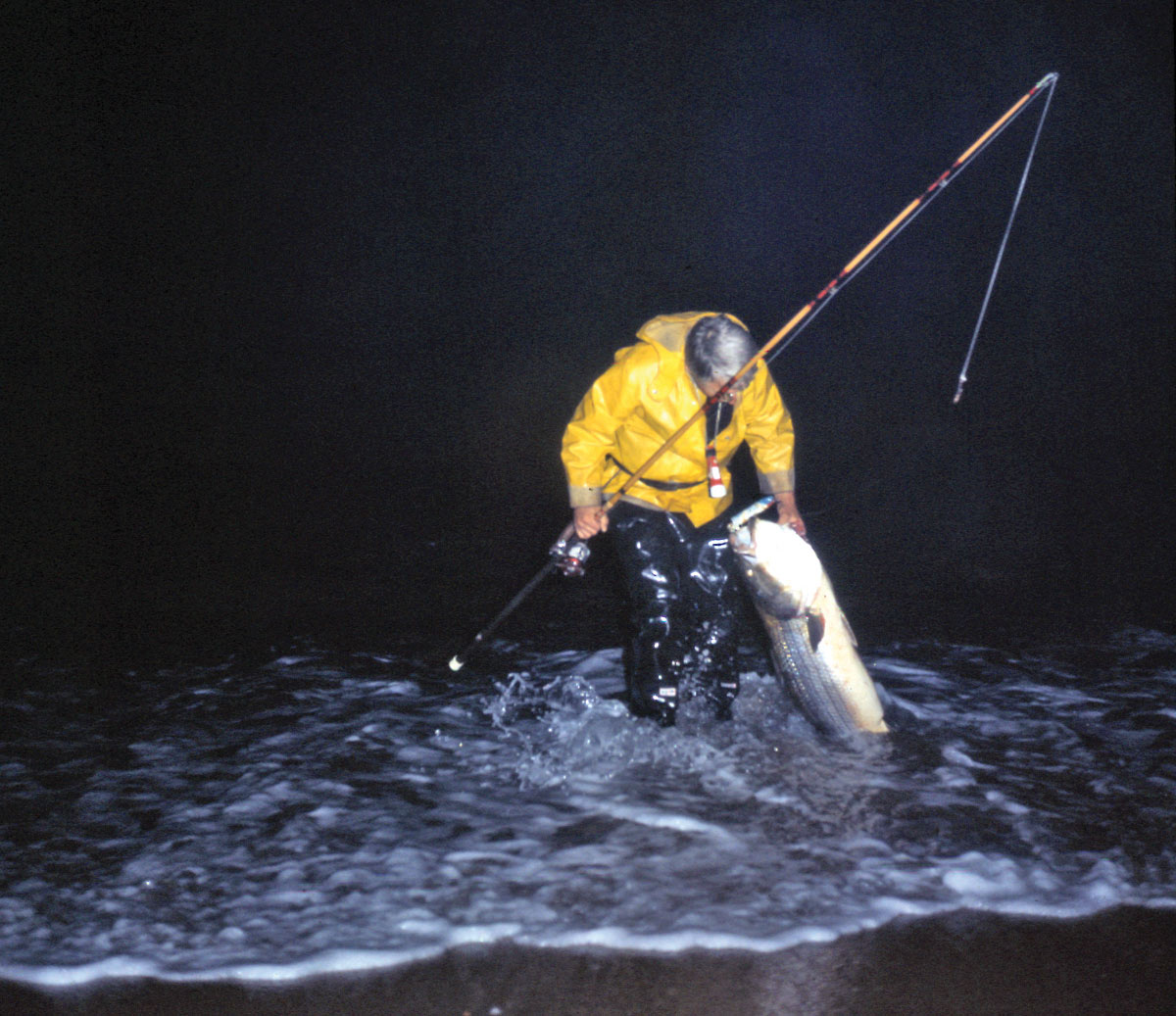
While fifties were down last season, the smaller fish, and not all that small, were in good numbers.
The number of reported 50-pounders for 2018 was 31. This represents a decline from the normal catch rate, but that could be because of an evolving ethic in the custom of release or kill of these fish. The customs of striper fishing in your father’s fishery were much harsher than those in place today.
Many fifties are being returned unweighted, which is causing an under-reporting of moby stripers that, other years, would have been counted. It’s a changing world and there is much less killing of these trophy stripers. This is, as a natural evolution of factors, good for the fishery. Just as likely catch numbers may be down for a combination of factors – less big bass, more release, and low young-of-the-year birth rates over 20 years before. We just don’t know and it would be impossible to find out.
Ancillary Numbers
The greatest annual yield ever recorded was around 225. That occurred in 1967, the same year Charles E. Cinto, with whom I was acquainted, caught his famous 73-pounder, which, at the time tied the World Record. That high count might have been because such fish, known to have been over 20 years old, would have been hatched out prior to 1947 which were war years when few were fishing. Admittedly, a highly speculative explanation.

Another recurrent consequence of sport fishing for stripers is that about 10 percent of the fifties count are caught from shore. Last year shore fishermen beached five with a top surf monster of 58 pounds. The cow was the first reported fifty of the season taken on a bunker chunk in New Jersey. This percentage of surf fish is consistent with the history of fifties results. I also think shore fishing yields would probably decline because surfcasting opportunities are shrinking with less access and an increased interest in boat fishing. The beach is a tough place and increasingly demanding in the face of so much boat fishing in the mix. Striper fishing is carried on in a changing world.
There were three fish over 60 pounds, one of which was an estimated 70-pound behemoth Block Island striper released, which was not weighed but measured and determined by the formula (length x girth squared / 800). I did extensive testing on formula accuracy years ago for one of my books and it is amazingly accurate as long as the measurements are correct. Again: as long as the measurements are accurate!
Tradtional Hot Spots
Once again Block Island gave up the greatest number of monster stripers for boat fishing. We rarely hear about Cuttyhunk monsters anymore, and the Block seems to have taken Cutty’s place. The Cape Cod Canal, following recent trends, has become the place for shore fishing with safe, legal access and plenty of stripers in its robust tides. Decline in rod and reel commercial fishing seems to have lowered interest in Cape fishing. Also, overwhelming seal numbers, along with the resultant draw of sharks feeding upon the seals, appears to have given a lot of the regulars the horrors. One loses interest in wading Outer Cape bars when one hears about shark attacks in the surf there. There were two shark attacks in the area, and one of them was fatal. The thought of wading those bars in the deep night for one fish with a 12-foot Jaws mistaking you for a seal is a huge turn-off and raises one’s interest in golf. However, boat fishing continues in Provincetown and Cape Cod Bay, and 50-pounders were taken in the Bay, probably the same fish taken in the Canal as there is a huge interplay between Canal stripers and those frequenting the Bay. The Canal, by the way, seems to have replaced the fishing on the Outer Cape.
Maine striper fishing, while I know of no fifties there, continues to provide reliable bass fishing for both shore and boat fishing. The handful of regulars with whom I am acquainted, including our daughter, all report reliable striper opportunities to the north.
Maritime Explosion
While exact numbers of 50-pounders are not known, it is a certainty that striper fishing has reached explosive levels. An example of that is that salmon fishermen on the Miramichi River in New Brunswick, Canada found stripers as far upstream as 60 miles from tidewater. They claimed salmon smolts were down to 10 percent survival. This has salmon anglers puking in their flathats, especially when they find salmon smolts in a striper’s belly. Once you get to the Maritimes, stripers are considered a coarse species by salmon fishermen. Nothing freaks out a salmon guy more when hooking up only to find it is a flipping striper. There is more.

Reports indicate that stripers are all over the Maritimes from Grand Manan to unknown parts way north. Different races from different rivers, some United States but distinctly Canada. St. Lawrence, and the St John River, which enjoyed a miraculous recovery but suspected to have drawn contributing spawning fish from either the U.S. or Nova Scotia’s Shubenacadie River. It is a hodge-podge of wildly-increasing striper successes from who knows where which is a geneticist’s nightmare in stock identification. Still, it is an epic success story. Not my field, but it makes you wonder if warming seas in that Northwest Atlantic region has created a new striper region.
This is wild country, which does not resemble the striper waters with which we are all familiar. People see things in fisheries development and have no way of reporting it nor do they even know if they should. A 50-pounder is just a nice fish without weighing it so they just eat it. On the other hand we never counted fish from that far north in the past. (Either we didn’t know they were there or no one cared to report it.)
Southern U.S. YOY
The Maryland Department of Natural Resources announced results of its annual young-of-year striped bass survey in Chesapeake Bay, which documented healthy reproduction of the state fish. The 2018 young-of-year index is 14.8, higher than the 65-year average of 11.8. Like our fifties count, not enough is known about the true numbers of bass born in the various source rivers. Consequently, striper production could be up or down in one river and up or down in another. Nobody landing a fish can really say where it came from. Stock identification, the fisheries student’s nemesis, is flawed by the contributions of Chesapeake, Roanoke, Hudson, and Delaware Rivers to say nothing of the smaller contributing streams. Just keep fishing and putting them back.




